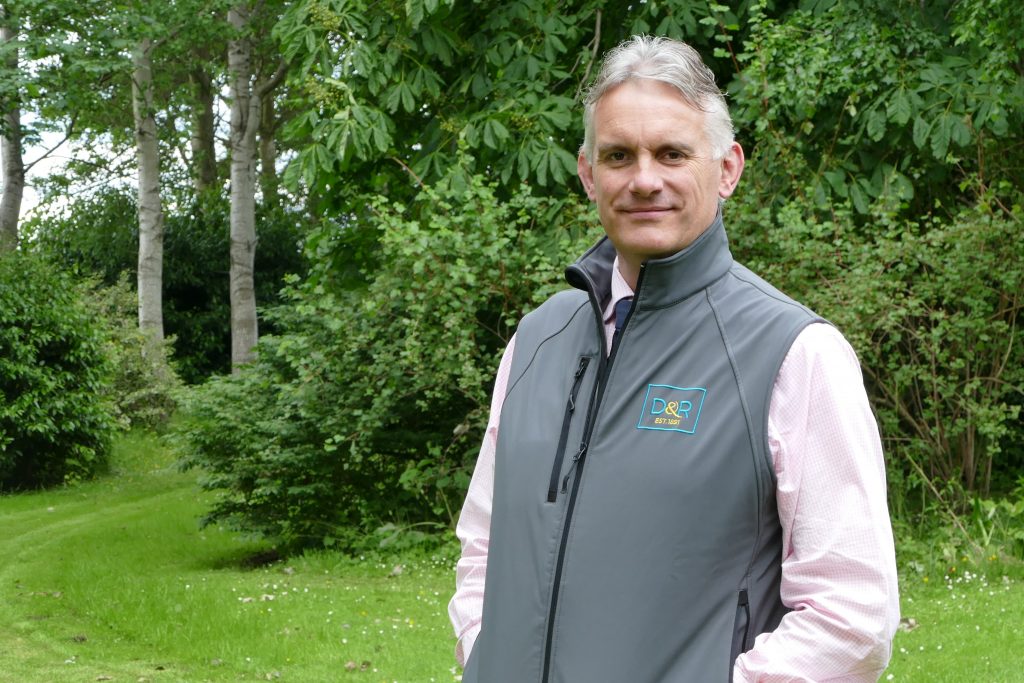There is so much is going on in the renewables and energy marketplace, especially with governments’ legally binding targets for Net Zero on the horizon. Derek Bathgate, Director at Davidson & Robertson (D&R) reviews the four key components that are the main energy focus.
In the UK, it is Scotland that leads the way with a huge amount of activity:
- Onshore wind
The Scottish Government wants a further 20GW of onshore wind turbines installed by 2030, this equates to a new wind turbine being erected every day between now and then. There’s still a huge appetite from developers to acquire rights for sites to achieve onshore wind power generation. There is also excitement within this sub-sector borne from the Scottish Government’s target and the recent publication of its National Planning Framework 4 (NPF4). Developers consider that NPF4 has rewritten the rules for renewables development on greenfield sites. It means potential wind farm sites that were previously turned down by planners, may now achieve planning permission under the new framework. Landowners who have had such sites would be wise to contact their Land Agent to determine if there are developers out there who will reassess their land for wind farm development.
There are also developers back in the market looking for small sites to erect just one, two or three turbines. Long lease rents for wind turbines and associated apparatus remain very attractive.
- Solar
D&R has previously reported on solar development in Scotland, it’s no longer the preserve of the south of England. There are many sites under option in the north of England and (mainly but not exclusively) around coastal areas of Scotland. Many landowners will be surprised where solar power generation is now viable. ‘Bifacial’ solar panels, made with glass on both sides of the panels, enable direct sunshine to charge the upward-facing panel and reflected sunshine to charge the downward-facing side, which improves efficiency, output, and viability.
Again, NPF4 is giving developers renewed vigour to develop solar farms on land previously deemed excluded. For example, the framework states that solar is appropriate development within Greenbelts as it would generate renewable energy in close proximity to population centres. Solar developments can achieve natural capital and biodiversity gains through small animal grazing (e.g., sheep and hens), planting of wildflower mixtures, hedges, etc.
Different developers are after different things, some are willing to develop sites as small as 25 acres, whilst others seek at least 100 acres or more and want to include an element of battery energy storage.
- Battery energy storage
The appetite for battery energy storage sites (BESS) remains insatiable, but landowners need to beware of rogue traders and dodgy dealers who promise the earth and are likely to deliver nothing. The rental values for BESS long leases can be phenomenal from relatively small areas of land (3-5 acres provides a viable site), but it’s all about location-location-location, i.e., proximity to an electricity network operator substation. Landowners should take advice from a Land Agent before signing any documents relating to such sites, particularly Letters of Authority for grid connections, as rogues are ‘grid banking’ with no intention of developing a site on the land in question.
- Grid Connections
There are huge demands on the electricity grid network at present and network operators are under significant strain to deliver capacity to both consumers and developers. This is nothing new, but the problem is more acute with governments’ legally binding targets for Net Zero on the horizon. For example, proposals for the East Coast Transmission Network are in progress as part of a huge focus to make the transmission network fit to transport electricity from remote rural generation sites to areas of major population both in Scotland and England.
More capacity needs to be built within the grid network and we will see more, and bigger substations being built in the near future. A significant concept we are beginning to hear about is developers’ intentions to build their own substations on greenfield sites to accommodate their energy generation and achieve a grid connection. The talk on corners is that developers plan to plug into the grid by directly connecting to existing pylon lines (132kV and above), rather than into existing substations. If this can be achieved, it will be a game changer. Suddenly, landowners who have had to suffer the inconvenience of pylons standing on and over their property may find themselves viewing the pylon line very differently if a substation could be built on the ground and the rights sold for considerable value.
As expected, there’s lots going on in this space and the industry is finding ways to solve problems and achieve solutions to providing clean, green energy to an increasing population.
Any landowner potentially affected by such renewables or energy projects should ensure they seek professional advice from their land agents before signing any agreements.
For more information, contact Derek Bathgate D&R Director on 0131 449 6212 or email DB@drrural.co.uk



